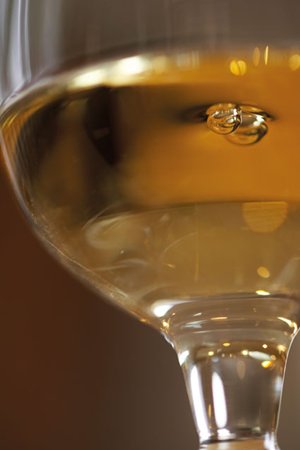Sweet Wines
A record number of Golds in every style and at every price, this was one of the strongest categories of the 2013 competition
Stickies submissions jumped this year. Why? Who knows. Perhaps because the on-trade is the only realistic chance importers have of selling this stuff. And on this evidence, they may be on to something: seven Golds was a record haul for the Sommelier Wine Awards and the feedback was positive more or less throughout.
 Given that the competition is tasted blind, it was interesting that fully five of this year’s Gold-listed wines were awarded medals of some sort last year: the Turckheim Gewürz and the Ken Forrester both got Bronzes in 2012, the Concha y Toro Sauvignon and Fairview La Beryl picked up Silvers, while the Castaño Monastrell repeated its Gold performance of last year.
Given that the competition is tasted blind, it was interesting that fully five of this year’s Gold-listed wines were awarded medals of some sort last year: the Turckheim Gewürz and the Ken Forrester both got Bronzes in 2012, the Concha y Toro Sauvignon and Fairview La Beryl picked up Silvers, while the Castaño Monastrell repeated its Gold performance of last year.
The majority of Golds went to botrytised styles, but interestingly this was also the area where our panels had a few problems, with too many of the submitted wines showing next to no botrytis character, apart, that is, from a willingness to charge for it.
‘I had very high expectations from this flight, but few wines made it through to the medal stage – it was very varied in terms of levels of botrytis, but also quality and concentration of the wine in the bottle,’ said Coq d’Argent’s Olivier Marie.
At the lower end, the judges were quickly able to find well-made wines at great value for money that really delivered. But in the mid-price area there was a good deal more discussion about value, style and practicalities such as how the hell they’d sell the stuff.
Food matches (such as panettone) were scattered around like sultanas in, well, a panettone, and by-the-glass was felt to be a good option for some of the cheaper versions, too. Fittingly, the cheapest Gold by a long way, the Concha y Toro late harvest Sauvignon, also picked up a By The Glass award.
The non-botrytised wines covered everything from chirpy Navarran Moscatels to super-intense Canadian ice wine, and while the cheaper examples didn’t win over everyone, Vivat Bacchus’ Laura Ward could see good reasons for stocking them, provided they were more than just a glass of sugar.
‘With a dessert wine, people want sweet – either fresher at the entry level, or deeper, more unctuous. We would struggle more with the middle range,’ she said.
The questions, then, were (a) whether the commercially priced stuff actually delivered enough of an experience to make it offerable, and (b) whether the genuinely good stuff was so expensive as to be impossible to shift.
In the end, our teams decided that good wines and high prices would work if hand sold with conviction, something that rounded things off with a bang, not a whimper. The bang caused by the super-intense Inniskillin could be heard 20 miles away and stopped river traffic on the Thames outside the tasting room, though it did so at a price.
Finally, a special mention to the Castaño Dulce Monastrell. Sommeliers take some convincing to list a tricky hand-sell like a sweet red, so to take the sole spot two years on the trot is truly impressive.
‘This had exactly what you’d look for in this style of wine,’ added Hakkasan Hanway Place’s Gabor Foth. ‘Very ripe cherry fruit, good body, a good fresh core of acidity, an interesting, beautifully balanced flavour profile. It would add a nice point of difference on the list.’
FOOTNOTE: while prices shown on the winning tasting notes relate to the size of bottle available, prices are normalised for 75cl for judging purposes.
‘You can serve sweet reds chilled, with chocolate desserts where you don’t want something as rich as a Port. I think it’s a style that does need to be explored further.’
Charles Pashby-Taylor, Dabbous
‘The botrytised whites were very mixed. I thought the cheaper wines won over the more expensive.’
Michael Harrison, STK
‘For me, in a restaurant environment these wines should be the ultimate add-on at the end of the meal and they can really surprise and delight customers.’
Tim Wildman MW, Winetec
‘Seventy per cent of our dessert wine is sold by the glass, so the higher end is at a disadvantage in pricing terms.’ Garry Clark, The Chester Grosvenor